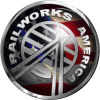I am new to TS. I got it because I have always wanted to recreate a route close to home that is still around but not like it used to be. This railway make an x in my state running north/south,and northwest/southeast. I have started where the two longest straight tracks meet. These are roughly 30 miles of track north/south, and 20 miles East/west are dead on according to Google maps and LON/Lat. Now I have to start with the curves at the north, east and west points. South Still going straight but little offsets here and there.
So on to my question, The red triangles denote the ends of the ribbons, right? Is it better to keep these ribbons longer or shorter? Does it matter? Is there way to make the ribbons longer once the track is laid? My goal is to make it as A! friendly as possible. I guess I don't understand what the ribbons are for? I don't even know if I need to worry about ribbon and the triangles. The is a few places where these red triangles are only a few meters apart.
Also While I am at it. I am laying the track at zero elevation. My thought is to get the mainline laid and then go back and raise/lower where I need to. Is this the right way of should I worry about elevation first? I can't find elevation date in a form I can use?
Thank you for any and all help.
Kevin
Question about Ribbons
First unread post • 2 posts
• Page 1 of 1
Re: Question about Ribbons
Operation-wise, I've never had any problem with long/short ribbons. What you should know ahead of time, though, is that at each red triangle will be an elevation/gradient marker (click on the Gradient tool and you'll see yellow markers; they look like pins) along your track at those points. If you plan to adjust elevation later, a lot of "welds" (what we call the ribbon junctions where the red triangles appear) will mean a lot of adjustments... it can be a real pain. Unless you are in a very flat area, you should consider acquiring and loading the USGS elevation data for your area which will give you realistic terrain to build on. On that terrain you can "discover" (by trial and error) the varying grades along your route. Also, a good track chart will include elevations/grades and their transition points. Getting the terrain loaded is quite a process in itself, but well worth the effort for several reasons. There are several past discussions here in the forums on getting terrain loaded, the simplest being the terrain import feature of TS. For more accuracy in hill/mountain terrain I recommend using ReDem (search for it).
-

Toripony - Posts: 1083
- Joined: Thu Jun 04, 2009 3:13 am
2 posts
• Page 1 of 1
Who is online
Users browsing this forum: No registered users and 2 guests
